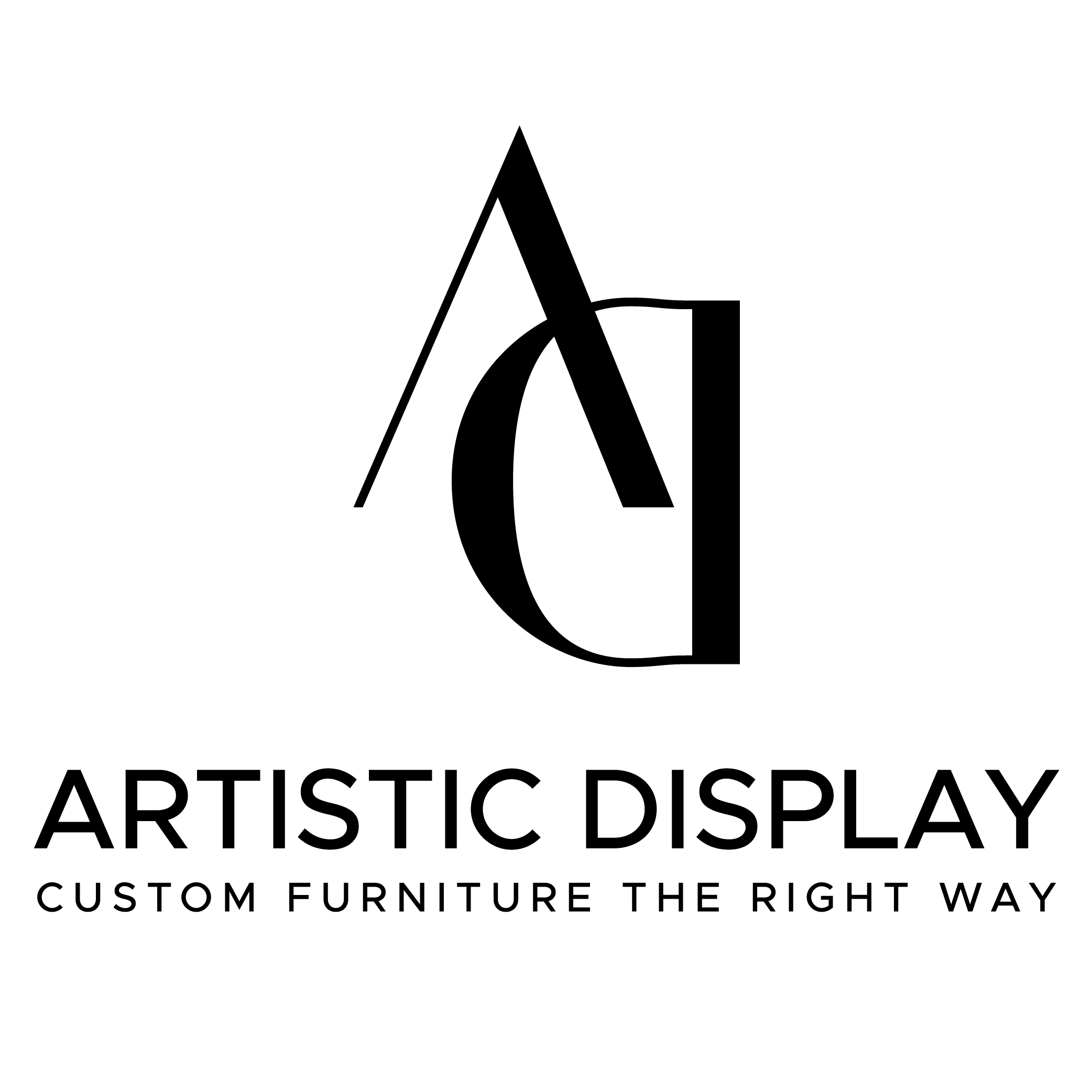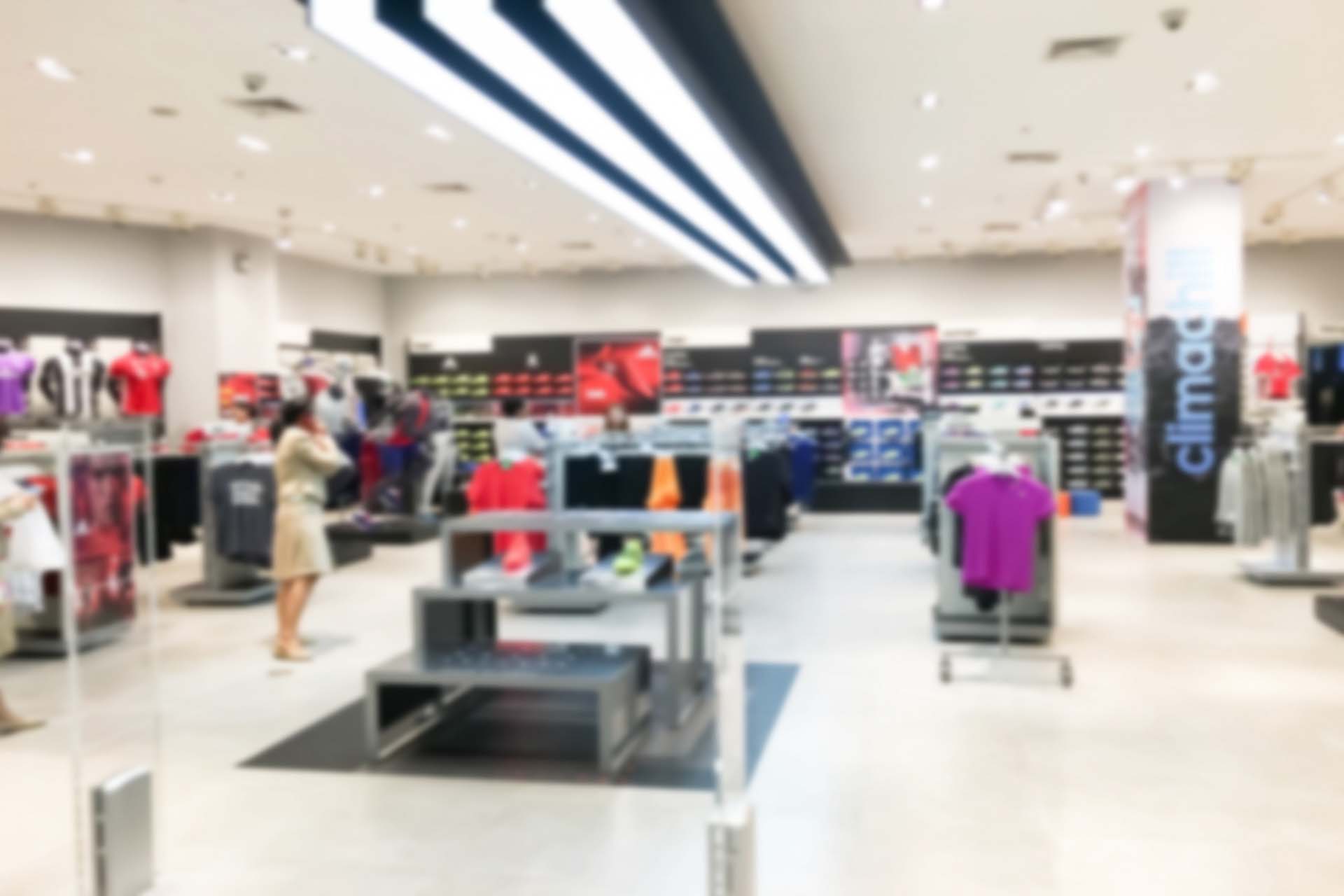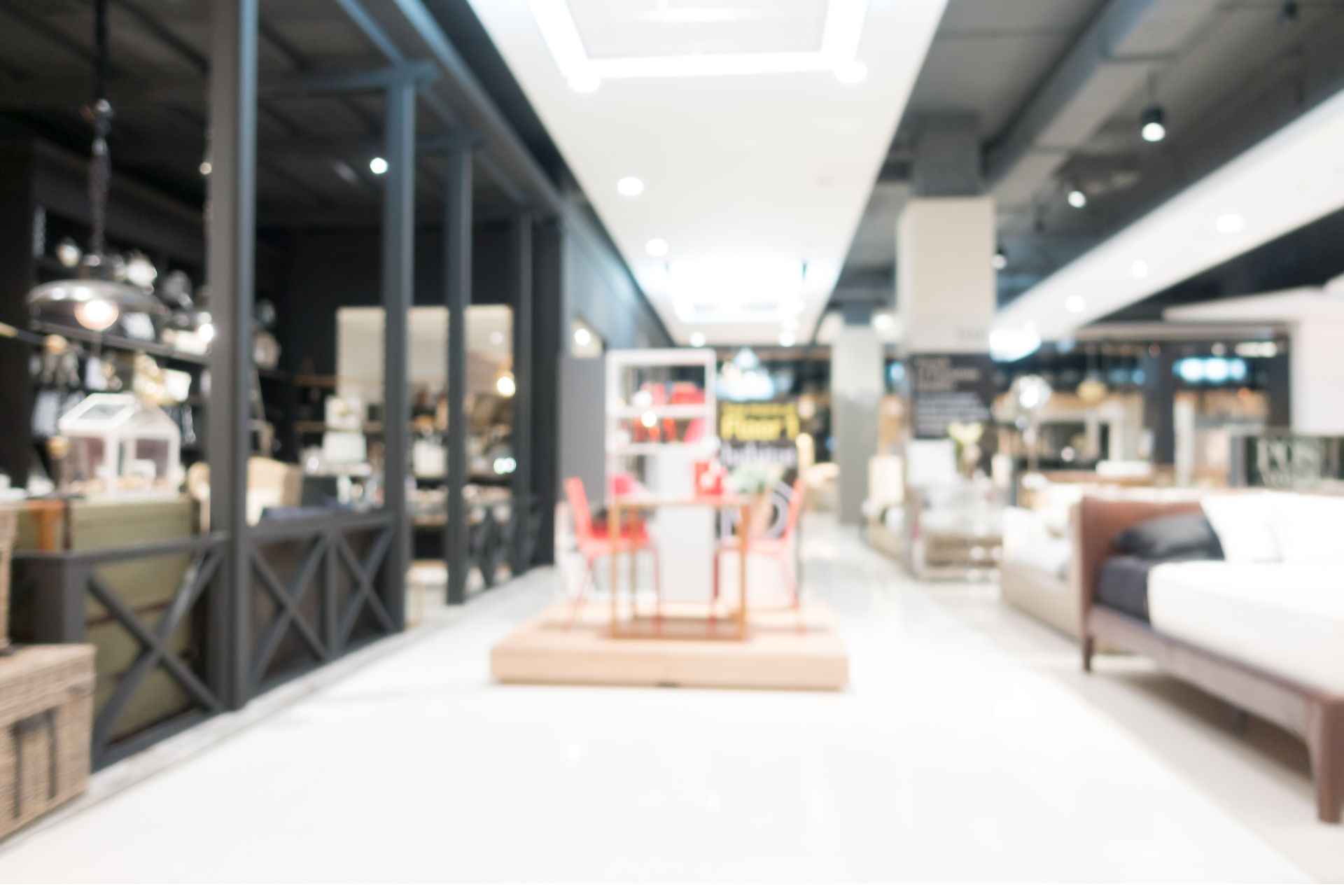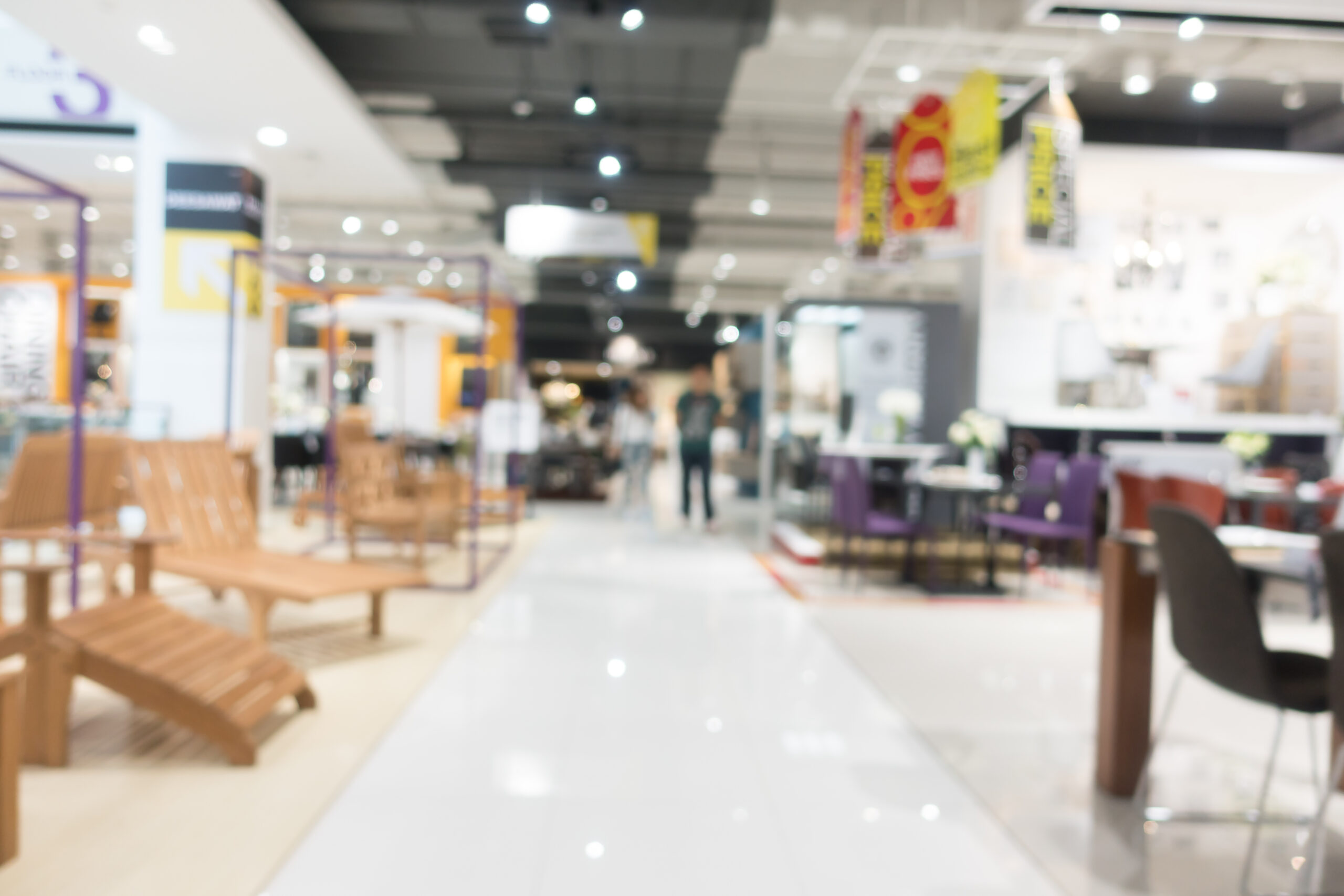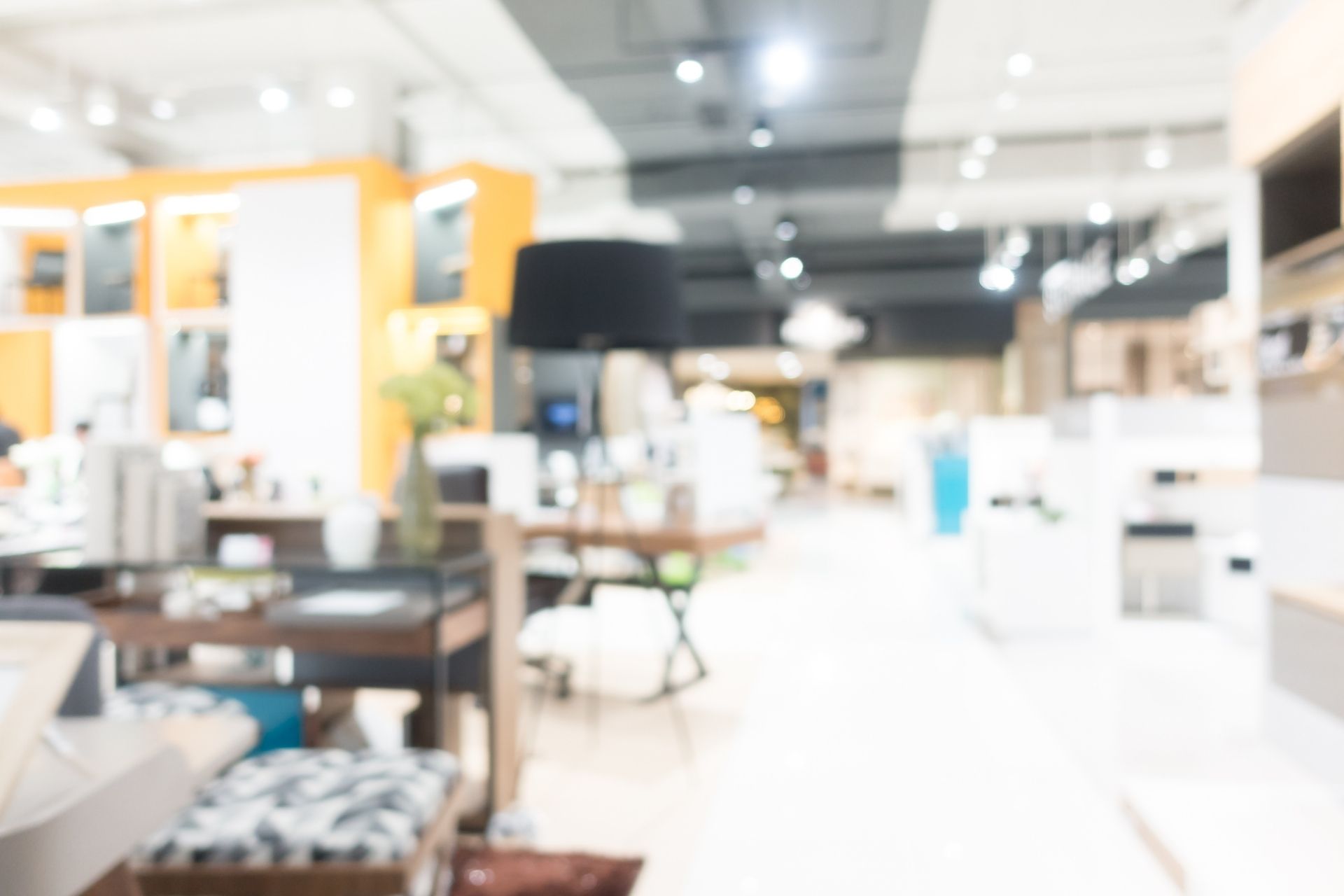Have you ever noticed how some stores in New York are easy to walk through while others feel confusing? That’s because of the store’s layout — how the shelves, displays, and aisles are arranged.
Store layout matters a lot for sales, customer flow, and the brand experience. A well-planned layout helps customers find what they need quickly, encourages them to spend more time exploring, and even increases the chances of impulse purchases. In other words, when a store is organized in the right way, people enjoy shopping more.
In this article, we’ll look at the different types of retail store layouts and some examples.
What is a Retail Store Layout?
A retail store layout is the way a store arranges its products, shelves, aisles, and checkout areas to make shopping easier and more enjoyable.
Take Macy’s Herald Square in New York City. The store uses a grid layout on the lower floors for clothing and accessories, which makes it easy to find different sections. On other floors, wide open spaces and attractive displays guide shoppers through featured products, which helps them notice new items.
Why is Store Layout Important in a Retail Setting?
From the moment customers walk in, the way a store is organized sends a message about the brand, builds trust, and makes shopping easier. A strategic layout turns your store into a powerful sales tool, not just a space for displaying merchandise. Remember: In retail, every inch of your store counts.
Types of Retail Store Layouts and Examples
When you walk through the busy streets of New York, from Times Square to SoHo, you’ll notice that every store has a unique way of arranging its products. Let’s take a closer look at the most common retail store layouts, their advantages and disadvantages, and the types of businesses that use them.
1. Grid Layout
The grid layout arranges shelves and displays in long, straight aisles. This creates a predictable and orderly pattern and makes it easy for customers to find what they need and navigate the store efficiently.
One of the main advantages of the grid layout is that it is efficient for stocking and restocking, allowing staff to maintain order quickly. It also encourages thorough shopping, as customers can systematically move through each aisle without missing sections.
However, the grid layout can sometimes feel rigid and uninspiring. Because of its structured design, it may limit opportunities for quick-decision purchases compared to more open or creative layouts.
This layout works best for supermarkets, drugstores, and large department stores where shoppers expect an organized, no-nonsense experience and value efficiency over exploration.
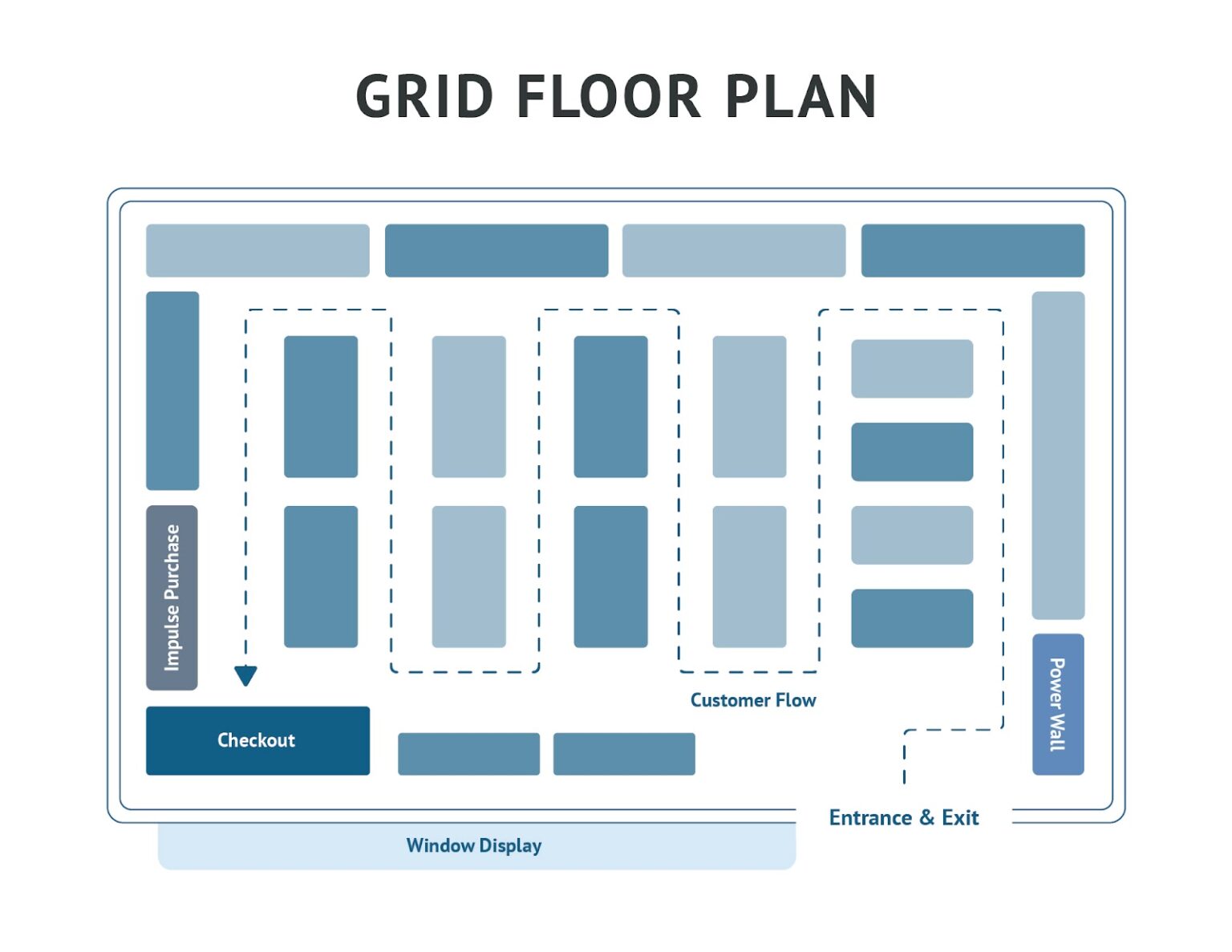
2. Loop or Racetrack Layout
The loop, or racetrack layout, guides customers along a defined path that loops around the store, leading them past multiple product sections. This layout is designed to encourage shoppers to explore more of the store while naturally directing the flow of traffic.
This layout exposes customers to a wide range of products. It also helps retailers highlight seasonal items, promotions, or featured displays along the main path.
On the downside, it can sometimes feel overwhelming, especially in busy or crowded stores. Shoppers in a hurry may find it frustrating if they cannot quickly access a specific section without following the full loop.
This layout is ideal for department stores, large specialty stores, and flagship locations, such as Bloomingdale’s in New York City, where retailers want to showcase a variety of merchandise and encourage customers to spend more time browsing.
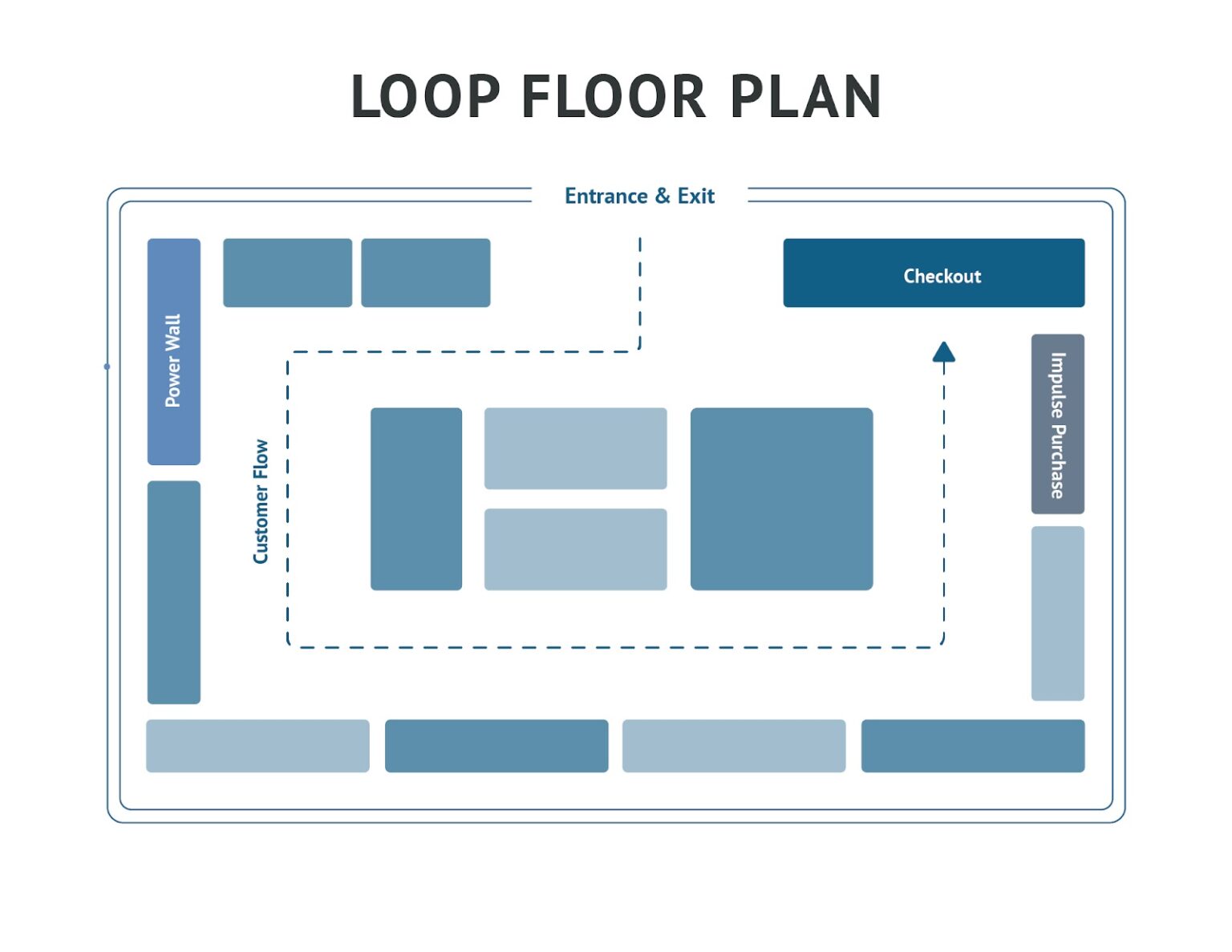
3. Free-Flow Layout
The free-flow layout arranges fixtures and displays in an open, informal manner, allowing customers to move freely throughout the store. Unlike rigid grids or loops, this layout encourages shoppers to explore at their own pace.
One major advantage of the free-flow layout is that it promotes discovery, as customers can easily notice featured products or new arrivals while wandering through the store.
However, first-time visitors might feel confused, as there is no set path to guide them.
It works best for boutiques, specialty stores, and trendy shops in New York neighborhoods, where the goal is to create a memorable shopping experience.
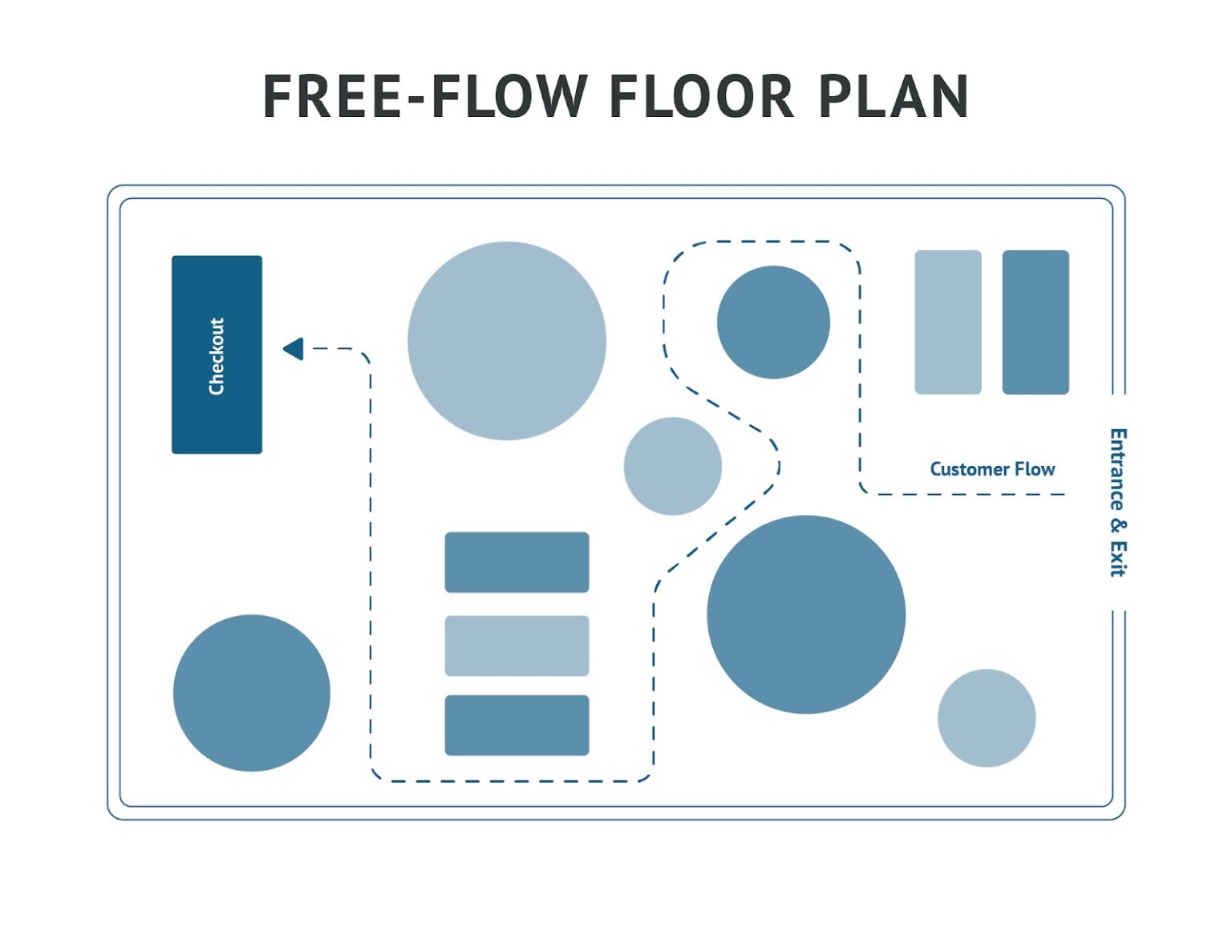
4. Herringbone Layout
The herringbone layout arranges aisles at angles, often toward a central aisle or focal point, creating a zigzag pattern that guides customers smoothly through the store. This design helps direct traffic while maintaining a visually appealing arrangement.
With its angled design, the herringbone layout facilitates easy movement and product access from various directions, which makes the shopping environment feel more dynamic than conventional parallel aisles.
A drawback of the herringbone layout is that it can be harder to reconfigure and often needs more floor space, which may pose challenges for smaller urban stores.
Clothing stores, shoe stores, and smaller department areas in busy New York locations benefit most from this layout, as it helps direct traffic smoothly while maintaining a stylish look.
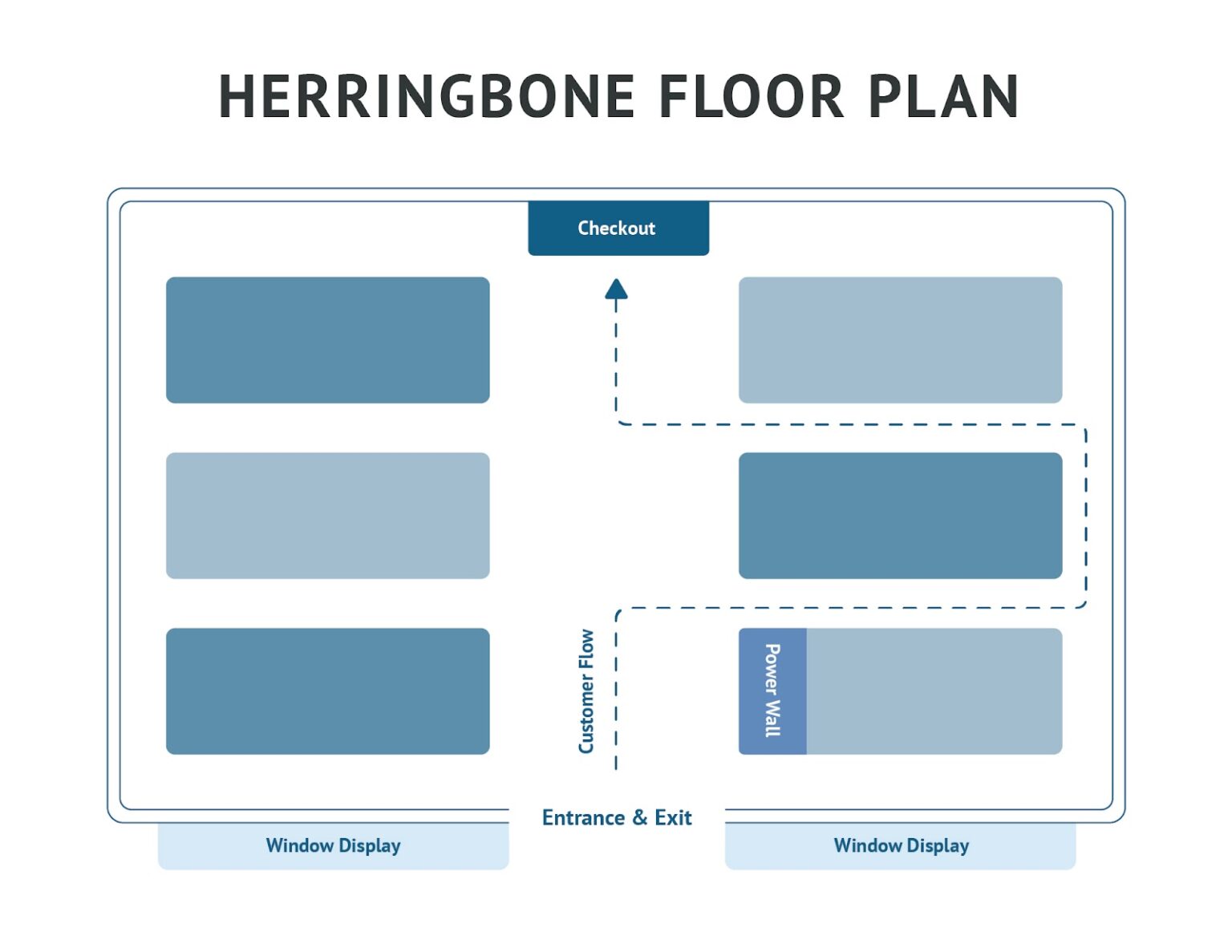
5. Diagonal Layout
The diagonal layout arranges shelves and aisles at an angle rather than straight across to create a more dynamic and visually interesting flow.
By directing attention to key merchandise and promoting exploration, the diagonal layout makes a store feel fresher and more engaging than conventional layouts. On the downside, it may reduce display space and can be tricky to implement in very large stores or tight urban spaces.
The diagonal layout suits small urban retailers — like fashion and electronics stores in New York — where guiding shoppers effectively while showcasing products stylishly is a priority.
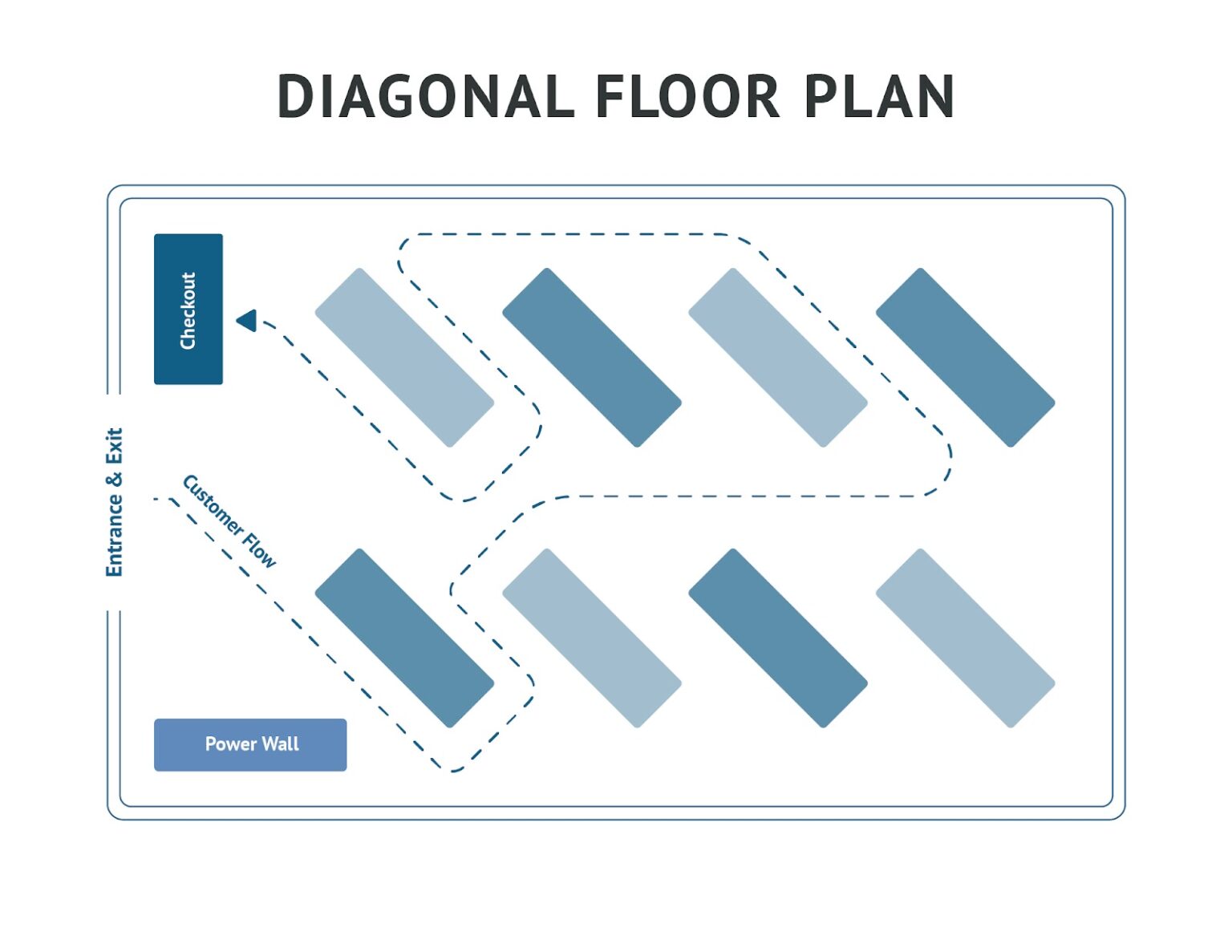
6. Boutique Layout
The boutique layout organizes products into small, themed sections, almost like mini-stores within the store. This creates a curated and luxurious shopping experience.
A benefit of the boutique layout is that it encourages browsing and storytelling, which allows customers to connect with the products more personally. It also supports snap purchases by highlighting featured items in each section. The drawback is that it demands extra space and meticulous planning, which can be difficult for very small or busy stores.
Boutique layouts are ideal for high-end stores like Tiffany & Co. or specialty designer boutiques in New York.
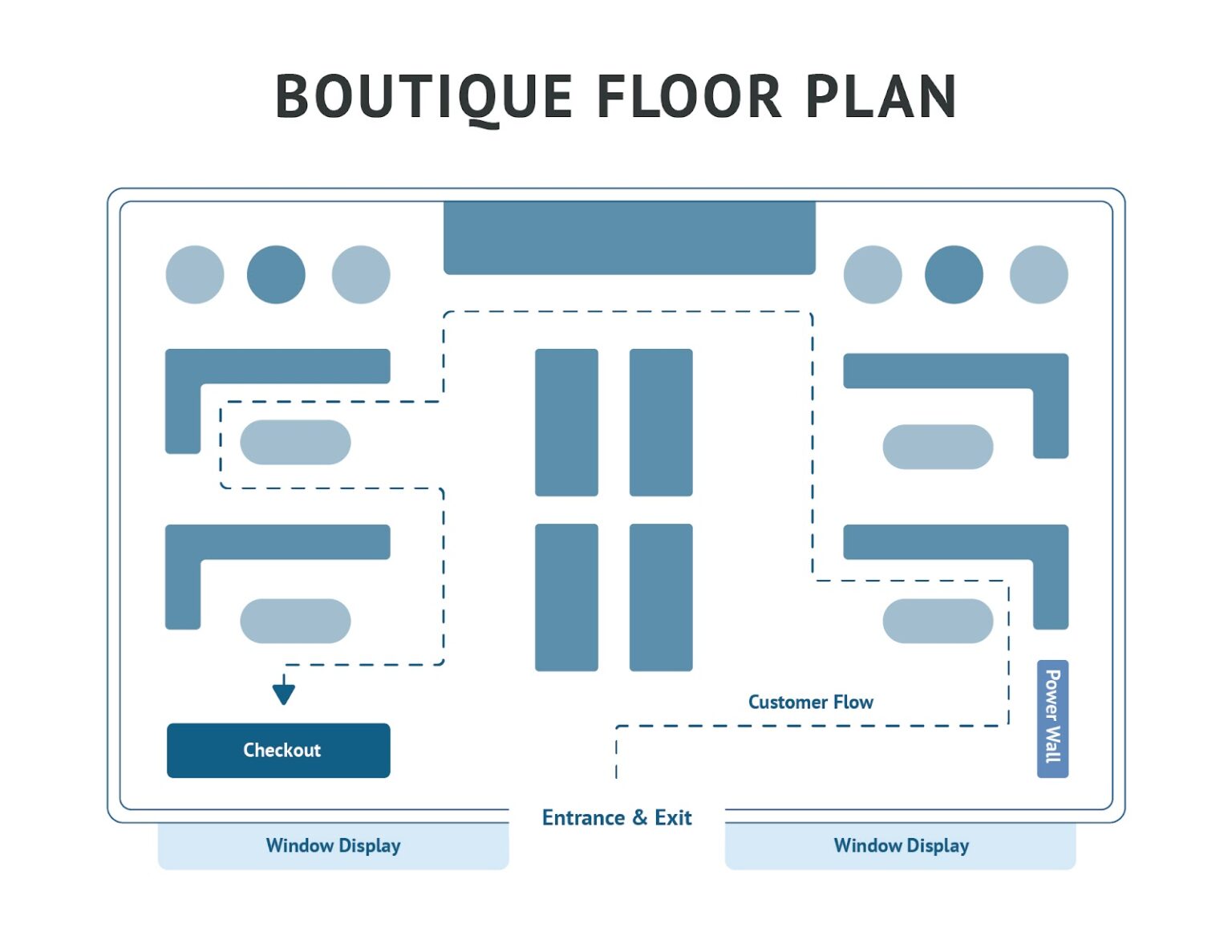
7. Angular Layout
The angular layout arranges fixtures and aisles at unique angles to break the monotony of straight lines and create dynamic pathways. This design draws attention to featured products and encourages customers to explore the store in a more engaging way.
Stores can feel modern and visually appealing with this layout since it highlights specific merchandise and improves sightlines. However, it can be less efficient for stocking and may confuse first-time visitors if the angles are too irregular.
If your goal is to create a trendy, visually striking store, the angular layout works best for fashion boutiques, lifestyle shops, and pop-up stores.
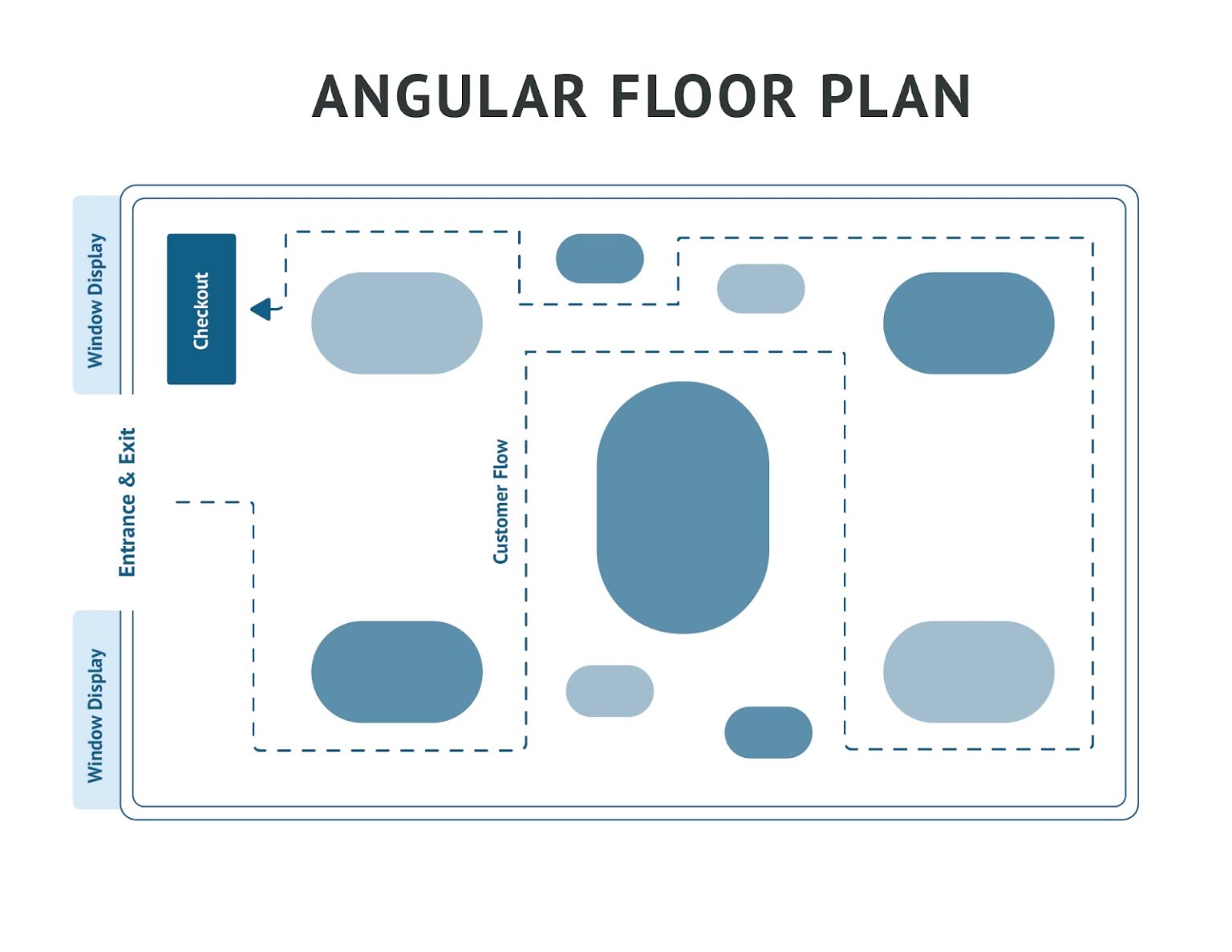
8. Mixed Layout
The mixed layout combines elements from multiple layout types to suit different sections of the store. For example, a department store might use a grid layout in one section for efficiency and a free-flow or boutique layout in another to encourage browsing.
A mixed layout offers flexibility, which allows retailers to balance traffic flow and highlight seasonal or high-margin items. Its main drawback is that it requires thoughtful planning and may come with higher implementation costs.
Mixed layouts are ideal for large department stores or flagship locations like Nordstrom in New York, where different product categories and customer experiences need unique layouts.
Factors to Consider When Choosing a Store Layout
Before selecting a layout, retailers should consider several key factors to make sure the store meets both business goals and customer needs.
Store size and shape
The physical dimensions of your store play a big role in layout decisions. Large, open spaces may accommodate grid or loop layouts efficiently, while narrow or irregularly shaped stores might benefit more from free-flow or diagonal layouts.
Target customer behavior
Are your customers looking for a quick in-and-out experience, or do they enjoy spending time exploring? High-traffic convenience stores may prioritize fast navigation with a grid layout, while a specialty store in New York encourages leisurely exploration using a loop or free-flow design.
Product type and category
Large, bulky items like furniture require wide aisles and straightforward layouts, while smaller, high-margin products such as cosmetics or accessories benefit from layouts that encourage browsing and impulse purchases, like boutique or angular layouts.
Brand identity and shopping experience goals
Your store’s layout should reflect your brand’s personality and the kind of experience you want customers to have. Luxury retailers like Tiffany & Co. in New York use boutique layouts to create an exclusive, curated atmosphere, while tech stores like Apple use open and minimalist layouts to emphasize innovation and modernity.
Summary
A well-designed retail store layout is more than just a way to organize products — it’s a tool that influences customer behavior, sales, and brand perception.
Ready to transform your retail space into an unforgettable shopping experience? Let Artistic Display help you create eye-catching layouts, striking product arrangements, and creative displays that draw customers in and keep them coming back.
FAQs About Retail Store Layout
Which store layout is most profitable for retail businesses?
There isn’t a one-size-fits-all answer — profitability depends on the type of store, products, and customers. Generally, grid layouts work well for supermarkets and drugstores due to efficiency, while loop/racetrack or boutique layouts can boost sales in department stores, specialty shops, or high-end boutiques.
Can I combine different layouts in one store?
Yes. Many large retailers use a mixed layout — for example, a grid layout for high-traffic areas and a free-flow or boutique layout for featured sections. Combining layouts allows you to balance efficiency, exploration, and impulse buying.
What layout works best for small retail spaces?
Small stores benefit from free-flow, diagonal, or boutique layouts because they create a sense of openness, encourage browsing, and highlight key products without feeling cramped.
How often should I update my store layout?
Updating your layout depends on sales patterns, seasonal promotions, and customer feedback. Most retailers refresh layouts annually or seasonally, while flagship stores or trendy shops may make minor updates more frequently to keep the experience fresh and engaging.
